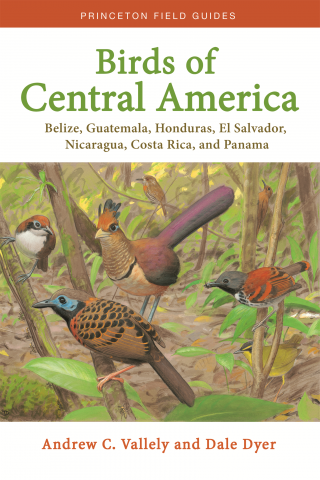
|
The newest Princeton University Field Guide is a masterful text for adventurous birders, seasoned travelers and anyone looking for a great book to digest. Considering that all birders have a field guide to the birds of North America, this volume is the next step. Most birders plan a warm-weather birding trip, and some of us travel to favorite destinations in such exotic locations as Panama, Costa Rica and Belize. This book has all those exciting birding locals covered, and the birds you encounter there are phenomenal.
In addition to Costa Rica, Panama and Belize, Birds of Central America, also covers Guatemala, Honduras, El Salvador and Nicaragua. This field guide is exceptional in that it includes comprehensive maps of the region, showing the nesting, wintering and migratory ranges of nearly 1,200 different species next to detailed illustrations of each species that also show differences in sex, age and seasonal plumages. What a wonderful effort by authors Andrew Vallely and Dale Dyer!
This book is so impressive and so comprehensive that it can be ranked among the best reading texts that will quickly consume you as you are compelled to study it from end to end, then review the high points again. The birds included in Birds of Central America are among the most exciting in the world, including such diverse and interesting families as parrots, toucans, hummingbirds, trogons, antbirds, woodcreepers, wrens, orioles, tanagers, raptors and many many more!
You can even learn more about birds that visit your yard and state – say the warblers, flycatchers and hawks – to see their wintering ranges in Central America, as well as their migration routes through the region. You may also be introduced to beautiful and impressive birds that you have never before imagined, such as umbrellabirds, manakins, cotingas, dacnis, mountain-gems, euphonias, antshrikes, Bat Falcons – and hundreds more!
If you aren’t yet inspired to visit famed Central American destinations, be careful, for this book will surely get your juices flowing for Latino avifauna and related cultural experiences. If you’re already a Central American fan, this book will surely enrich every birding experience in this bird-rich region!
For more information, see https://press.princeton.edu/titles/13253.html and, as always, thanks to Princeton University Press for their dedication to providing excellent field guides about birds from around the world, and other excellent publications about birds.
Review by Paul Konrad